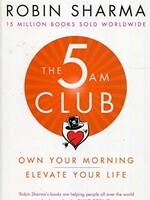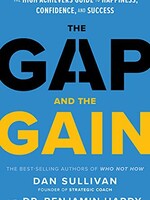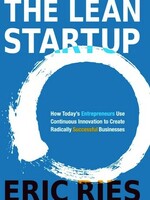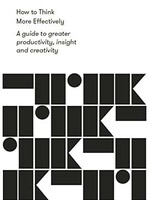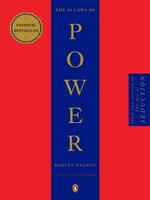Mavericks - Book Summary
How Bold Leadership Changes the World
Release Date: October 28, 2023
Book Author: David Giles Lewis, Jules Goddard & Tamryn Batcheller-Adams
Categories: Management & Leadership, Entrepreneurship
Release Date: October 28, 2023
Book Author: David Giles Lewis, Jules Goddard & Tamryn Batcheller-Adams
Categories: Management & Leadership, Entrepreneurship
In this episode of 20 Minute Books, we dive into the influential world of "Mavericks". This inspiring read, penned by David Lewis, Jules Goddard, and Tamryn Batcheller-Adams, serves as a clarion call for maverick leadership, demonstrating the tremendous impact of independent thinkers driven by meaningful objectives. Through it, they argue that anyone can harness their inner maverick by honing five crucial traits.
David Lewis, one of our authors, is a highly sought-after global business consultant with an impressive career spanning over three decades across industry and academia. His co-author, Jules Goddard, is known for his teachings on competitive strategy and creative marketing at the renowned London Business School, and has co-authored numerous books on business and leadership. Rounding out this trio is Tamryn Batcheller-Adams, a respected consultant and psychologist associated with TomorrowToday Global.
"Mavericks" is a must-read not only for leaders who aspire to challenge the status quo but also for anyone eager to cultivate resourcefulness and resilience. Moreover, if you're passionate about driving positive changes in your organization or community, this book can guide you on your transformative journey. So, join us as we navigate the provocative and pioneering world of "Mavericks".
Dive into the maverick mindset
In a world full of people, there are those who stand out, those who pave their way, those whom we call - Mavericks. The authors of "Mavericks" dived into conversations with these unique individuals to dissect and unravel their eccentricities. What do they have in common? Well, five significant characteristics it turns out.
Throughout our audio journey, you'll uncover that the ones who truly trailblaze, the game-changers, they all hold the maverick badge. And guess what? That badge can be yours too! Nurture this facet of your personality and embody the transformation you aspire to witness around you.
As we delve deeper, you'll discover
- the key to mastering the art of calculated risk-taking;
- the blueprint of constructing a maverick-infused organization; and
- the surprising fact that the implementation of stringent regulations and dress codes can, ironically, be a form of resistance.
Unleashing the maverick within, an ordinary phenomenon
When you hear names like Elon Musk, Jacinda Ardern, Steve Jobs, and Oprah Winfrey, what springs to mind? Unconventional, innovative leaders, right? They are those whom we refer to as maverick leaders - individuals with an unconventional, often unique approach to leadership that brings forth remarkable outcomes.
However, today our narrative will not be around these stellar mavericks, but about ordinary mavericks. Everyday people, much like yourself and myself.
Yes, indeed. The maverick label isn't an exclusive club. It's not about your genetic makeup, or if you were brought up to march to the beat of your own drum. In "Mavericks", the authors delve into a diverse range of maverick leaders, from executives to explosives professionals. Extensive research and interviews led them to a conclusion - these individuals didn't simply become mavericks due to nature or nurture.
It's true that some are naturally inclined to being more, let's say, unorthodox. Take for example, Sidney Alford, an explosives specialist. Exhibiting early signs of a maverick nature, he showed a deep fascination with bombs as a child, making fireworks from materials sourced from bomb sites during World War II. Later, Alford built an extraordinary career as an engineer, developing devices to neutralize terrorist bombs.
Alford was undoubtedly exceptional. However, the authors firmly believe that every one of us possesses an inherent maverick streak. If you look at children, they are naturally curious, inventive, and original. As we journey through life, it's our decision whether to nurture or neglect these characteristics.
In simpler terms, becoming a maverick is a choice - a choice that can be made repeatedly.
But why should we all strive to be mavericks? Is it really that crucial? According to the authors, it's more than essential. In our increasingly polarized and standardized world, mavericks act as a key to breaking these rigid paradigms. We need innovative thinkers, dissenters, and those who possess the ability to empathize and see things from different perspectives.
The ultimate aim? Fostering maverick societies for a more harmonious world. But let's not get ahead of ourselves dreaming about global transformation. Let's begin at the grassroots level - the individual. So, what exactly constitutes a maverick? Let's dive in.
At the heart of mavericks is the drive to improve
Through rigorous analysis and research, the authors of "Mavericks" identified five distinguishing traits inherent in mavericks — characteristics shared by remarkable leaders like Steve Jobs and even unsung heroes like Khadim Hussain, whom we'll talk more about shortly.
Let's delve into these unique maverick attributes, one at a time. With a deeper understanding of these, you'll be in a better position to actualize your latent maverick potential.
First and foremost is the power of belief — the strong conviction in the potential for improvement. Mavericks have a clear vision of what needs changing, and they have an ardent desire to bring about this change themselves. Their motivation is not rooted in ego or personal preference, but in the genuine desire to bring about an improvement.
A shining exemplar of this spirit is Khadim Hussain, who grew up in an isolated village in Pakistan. As a child, he contracted polio, rendering his legs unusable. Despite his physical disability, he was adamant about receiving an education. With no wheelchair, his friends carted him to school in a wheelbarrow. However, on reaching school, he was promptly turned away — the harsh message being: "People like you are not allowed here."
But Khadim was not a man to back down. He had a deep-seated longing for education and believed it should be universally accessible. He eventually championed the cause of education for girls in his village, a journey that involved challenging and altering the deep-rooted conservative mindsets of his village folk who considered girls unworthy of schooling.
Khadim encountered vehement opposition from various quarters, including religious leaders and even his father. Yet, he remained resolute. After two decades of relentless campaigning, Khadim has become a respected figure in his community, and thousands of female students have emerged from the school he helped establish.
Khadim's profound belief in the transformative power of education is what kept him going in the face of adversity and enabled him to effect change against all odds.
To embrace your inner maverick like Khadim, you need to remain unwavering in the face of setbacks and opposition. It's vital to identify your core beliefs and motivations. Ask yourself, what changes do you wish to see in your organization or community? What steps will you take to improve things?
The words of Gandhi serve as a fitting inspirational quote as they did for another maverick leader interviewed by the authors: "Be the change you want to see in the world."
Resourcefulness - the maverick's secret weapon
One commonality among mavericks is a burning desire for change. And to instigate this change, they need to be resourceful. This knack for resourcefulness is what sets mavericks apart.
To mavericks, being resourceful equates to forging connections and seizing opportunities, often through unconventional methods. They have a unique ability to see potential in places where others might not—like a maverick entrepreneur who notices a niche in the market and introduces novel products, thus creating thrilling business prospects.
Think of resourcefulness as identifying opportunities and leveraging them to your advantage. It's akin to "capitalizing on resources."
Social capital serves as an excellent illustration. Mavericks understand the immense value of social interaction and the exchange of ideas. A simple conversation between two individuals could be the catalyst for a new opportunity. Interestingly, a conversation between two acquaintances often generates more fruitful ideas than a chat between two close friends.
Armene Modi, a maverick leader, exemplifies the power of weak social ties. When she embarked on her journey to promote gender equality in India and start her own NGO, she didn't merely bank on the support of close friends and colleagues. Instead, she sought help from extended connections, in her words, "knocking on every door." She approached acquaintances, friends of friends, and even individuals at the periphery of her social circles.
As she disseminated her NGO proposal through her broad network, strangers started endorsing her initiative. These weak ties had an unexpectedly significant influence, enabling her to successfully launch her NGO.
Two decades later, Modi's NGO, brought to life through her expansive network, is still thriving and has brought about a significant advancement in gender equality in India. For instance, in some villages, the average marriage age for girls has increased from 13 to 19.
Modi's story serves as a valuable lesson, even if you aren't planning to start an NGO or incite societal change. Mavericks who are able to create impact know how to capitalize on social capital and fully utilize their networks - not just relying on close-knit relationships.
Of course, it's gratifying to work with friends and people you know and trust. But to truly make a difference, you need to extend your reach. Engage with your connections, their connections, and continue the chain to the fringes of your network—and then some.
That's not all; keep in mind that various forms of capital can be utilized across different situations. Be resourceful, always.
Nonconformity - the maverick's signature trait
Like many maverick leaders, Katharine Birbalsingh is both resourceful and nonconformist. She deviates from the norm, but not in the manner you might expect.
In 2014, she established the Michaela Community School in London, stepping into the role of the head teacher. Birbalsingh's educational approach would hardly be deemed trendy by 21st-century standards. At the Michaela School, traditional subjects are prioritized. Latin has replaced Information Technology, and students are required to observe silence as they move between classrooms.
If you're guessing a stringent uniform policy, you're right. The school even dictates the allowed styles of pencil cases. Birbalsingh believes that rigorous discipline and high expectations are beneficial for students. The results align with her belief — the school boasts impressive academic records, earning it the "outstanding" label from inspectors.
While Birbalsingh's methods might not seem obviously maverick-like, they are indeed radical in the context of UK's current education system, disrupting the status quo.
Birbalsingh's views have ruffled some feathers among her more progressive peers. Before the Michaela School's establishment, she voiced her opinions at a Conservative Party conference, triggering a wave of backlash. She expressed concerns about the negative impact of white guilt on minority students in the education system and emphasized the importance of individual accountability. She advocated for setting higher standards and expectations for minority students.
Her comments, as anticipated, sparked controversy among her liberal peers, leading to her resignation and professional ostracism.
Undeterred, Birbalsingh rebounded and successfully launched the Michaela School. But her experiences highlight the risks that come with nonconformity. As a maverick, you're likely to stir things up, and setbacks are inevitable.
To navigate this, the authors suggest finding "fertile ground". Discover an environment where your nonconformist ideas can thrive and be put into action. It doesn't have to mean resigning from your job or abandoning your community. Sometimes, it can simply involve finding a different boss or social circle. Collaborate with those who understand you, even if they don't entirely agree with you.
A word of caution though: avoid being unorthodox just for its own sake. Like Birbalsingh, you should be a rebel with a cause, willing to act unconventionally to instigate positive transformations.
The experimental nature of a maverick
Mavericks, by their very nature, encounter hurdles and even taste failure at times.
Failure, while intimidating, is a concept that doesn't deter mavericks. They recognize that with trying new ventures comes the risk of stumbling.
Consider the process of learning to ride a bike. The way forward is to just give it a shot. Each fall is followed by picking yourself up and trying again until you've mastered it.
This principle is well-understood by mavericks. They acknowledge that errors are inherent to the journey of progress.
They also appreciate that often, the most effective learning is through trial and error. They're ready to experiment with various approaches until they find the one that works.
However, suggesting that you should "simply experiment" isn't particularly useful. It's crucial to experiment skillfully for optimal outcomes.
One of the mavericks interviewed by the authors, Oscar Corona Lopez, has a commendable approach towards experimentation. Lopez founded his own agency for a Mexican insurance company. Given the high probability of start-ups failing, he recognized the importance of adaptability and experimentation. He also knew that efficient experimentation begins with asking the right questions.
While recruiting for his nascent company, Lopez pondered: "Where can you find individuals eager to participate in something?" The answer he landed on was reality shows like The Voice, where auditions take place.
Lopez posed a question, discovered an answer, and then formulated a business hypothesis. He told himself, "If I treat the recruitment process like an audition, I can select people who are enthusiastic about contributing. That way, I'll have a more effective team."
Next, Lopez implemented the experiment - he devised a creative recruitment procedure resembling an audition. Candidates were required to produce videos about themselves and engage in group tasks.
Once the selected candidates were on board, Lopez took time to reflect on his experiment. How did these new recruits compare to those brought on board via traditional methods? Which aspects of the experiment worked well? What could be improved in the future?
Lopez's recruitment experiment provides a valuable lesson for all of us. It basically outlines the blueprint for successful experimentation: posing pertinent questions, generating a hypothesis, conducting structured experiments, and then evaluating the outcomes and drawing lessons from them.
This is how a maverick experiments. Try using a similar approach for your next project and assess the results.
Mavericks' resilience against odds
So, what happens when your meticulously crafted experiment crashes and burns? Notably, setbacks and failures are part and parcel of a maverick's journey. That's why persistence is such a fundamental trait in mavericks. They remain steadfast regardless of the circumstances.
This holds true even in the face of intense opposition. This was evident in the instance of Khadim. Recall his earlier story? His relentless campaign for girls' education in Pakistan was met with resistance and hostility, including from his own kin. Despite these odds, Khadim remained unshaken. He did not abandon his cause.
In their discussions with maverick leaders, the authors found this trait to be a commonality. All these mavericks demonstrated tenacity and resilience. They kept pushing on despite challenges.
Now, you may assume that resilience is an inborn quality. Perhaps, but resilience can also be developed. The key lies in understanding your goals - specifically, your higher order goals.
Goals can be of various types. Some goals are daily tasks or practical, short-term objectives. These are helpful in maintaining focus. However, they aren't always enough to keep you going when faced with strong resistance.
In such times, you need to lean on your higher order goals. These goals are deeply ingrained in your belief system. They reflect your values, your life philosophy, and things that truly matter to you.
For Khadim, the real essence was to improve access to education and opportunities. He desired to enhance people's lives. These were his higher order goals – which were fundamentally tied to his life philosophy.
During their discussions with various leaders, the authors observed a noticeable trend. Every maverick shared their goals and philosophies. While they didn't always state them explicitly, it was evident that they were driven by a sense of inner purpose. They emphasized the significance of recognizing potential in others, advocating for the underprivileged, or making a positive difference in their country.
If you haven't pondered over these aspects yet, now is the time to question, "What is my life philosophy?" and "What are my higher order goals that will guide my actions?"
Upon discovering these answers, you'll find that you possess a resilience level that is astoundingly high, akin to other mavericks. Furthermore, you'll comprehend the true significance of your work.
Becoming a maverick leader to fulfill your higher purpose
For mavericks, professional pursuits are highly personal. When your work aligns with your life philosophy and higher order goals, it becomes a wellspring of meaning and gratification.
A capable maverick leader aims to bring about improvement, devoid of ego and arrogance. In the process, they often experience profound personal fulfillment through their professional endeavors.
Just ponder the fact that human beings are inherently inclined to work. It's part of our genetic makeup. Our earliest ancestors functioned in small groups, collaborating and interacting socially while carrying out their tasks. Today, the scenario remains the same. We derive fulfillment from group activities.
Given that we all possess a maverick instinct and derive satisfaction from collective endeavors, it's no surprise that maverick leadership can be immensely gratifying.
We've explored a few concepts related to unlocking your inner maverick potential. You can introspect in the manner of Khadim Hussain and define what changes you aspire to bring and why they are significant to you. You can conduct a few experiments, leveraging the framework that Oscar Lopez found effective.
The authors also share a few other practical recommendations, inspired by their conversations with mavericks and their personal business experiences.
Firstly, cultivate curiosity. Mavericks are characterized by a consistent sense of curiosity. Strive to connect with individuals from diverse backgrounds and experiences, and engage with them out of genuine curiosity. This involves asking insightful questions and attentively listening to both spoken and unspoken responses.
Post-conversation, it's a good idea to jot down notes. This suggestion is courtesy of maverick Keith Coats, who works with the futurist consultancy TomorrowToday. Coats proposes maintaining a journal of all these intriguing discussions – it can transform into an invaluable resource and learning tool.
Over the years, Coats has had "curiosity conversations" with a wide array of individuals, including authors, entrepreneurs, a homeless man, and a monk who underwent a 10-year silent retreat.
A curious mindset will enhance your learning. And for leaders to adapt and flourish, learning is non-negotiable.
Here's another practical tip to foster a maverick trait: adopt an experimental approach towards life. Experiments needn't necessarily be grand ventures. They can be small-scale daily tasks. Every night, before turning in, formulate an idea for an experiment that you intend to kick-start the next day. And then, go ahead and implement it!
Make it a point to be experimental every single day; indulge in something novel. Remember, being a maverick revolves around repeated decisions and actions. It's a ceaseless journey of evolution.
Maverick organizations shaping a better world
It's time to widen the lens and view the larger panorama. Our world needs more than just individual mavericks; we need maverick organizations that can contribute to building superior societies. Remember, mavericks always aim high!
So, what exactly does a maverick organization look like? How can one create such an entity or transition an existing company into a more maverick-esque identity?
The transformation journey of the Dutch bank ING serves as a perfect example. In 2015, this traditional organization underwent a substantial makeover.
The primary change involved a significant reorganization of the highest-ranking staff. Initially, they were bifurcated into 13 "tribes", and subsequently into 350 "squads", each comprising nine members.
These "squads" now operate as multidisciplinary teams. The redundant layers of steering committees, project managers, or unnecessary hierarchies and bureaucracy have been done away with. Staff members can now interact and network in an informal setup rather than spend valuable time in meetings, leading to enhanced transparency. The ambiance now mirrors that of a university campus more than a conventional office.
The metamorphosis of ING into a maverick organization was facilitated by decisive leadership actions. Interestingly, the changes were prompted not by other banking entities but by technology companies like Spotify.
If these transitions could be encapsulated in a single term, it would be "adhocracy". ING morphed into an adhocracy - an organization characterized by a flexible and less hierarchical construct. The focus shifted from a top-down approach to a customer-centric model.
Adhocratic structuring is a signature feature of a maverick organization. So, give some thought to your organization's structure. If it's old-school, marked by hierarchy and bureaucracy, brainstorm ways to disrupt the status quo.
There are numerous maverick practices adaptable to almost all organizations. Naturally, for several traditional companies, becoming maverick involves a fundamental shift in approach. This includes fostering a spirit of experimentation and organizing around the problem that needs addressing rather than the role to be filled.
These changes don't transpire overnight. But they are certainly achievable, especially under the guidance of a maverick leader. Perhaps a maverick like you could drive the change!
Wrapping it up
And with that, we've reached the end of our journey exploring "Mavericks" by David Giles Lewis, Jules Goddard, and Tamryn Batcheller-Adams.
The Maverick Manifesto perfectly captures the essence of our exploration: “I am a nonconformist. I am resourceful, resilient, and experimental. I wish to make things better, and I am equipped to do so. In life, I am steered by a clear vision of my higher order goals and personal philosophy.” Adopt this manifesto as your personal guide to unlocking your inner maverick. In doing so, you will discover self-fulfillment, enhance your organization, and perhaps even bring about world-changing transformations.
Take an immediate step by asking a colleague, “How can I evolve to bring out the best in you?” When they offer their suggestions, you can respond, “To facilitate my change, it would be beneficial if you could adapt your own behavior in this manner.” And this dialogue continues. It's an excellent conversation starter that hinges on trust and also works towards fostering it. Through this approach, you can begin to build a network of people who back you.
Thank you for lending your ear to this book summary. Please feel free to rate the summary and share your feedback. We hope you've enjoyed the experience and look forward to having you join us for other engaging summaries. Until then, continue discovering, learning, and growing!
